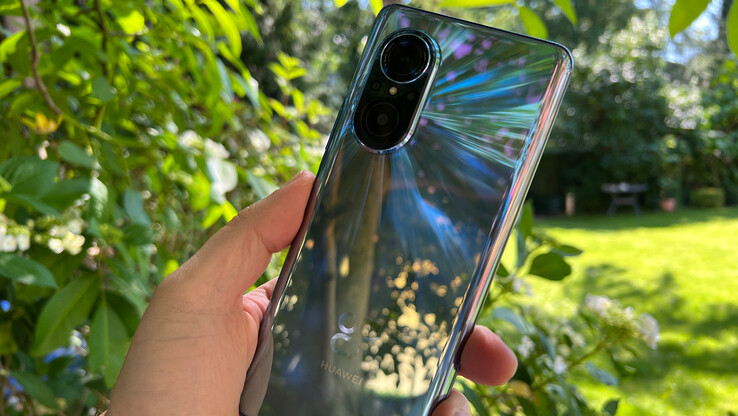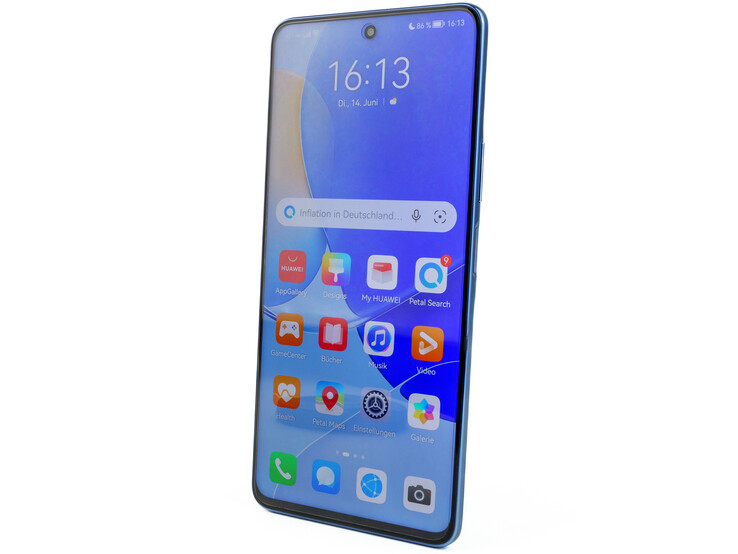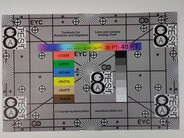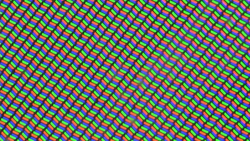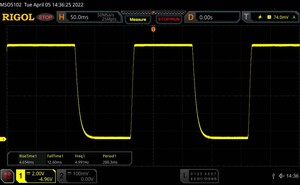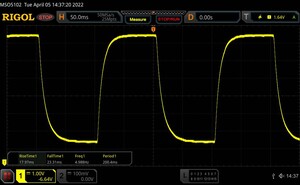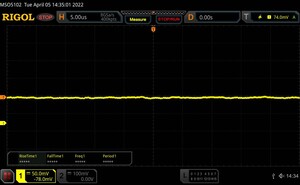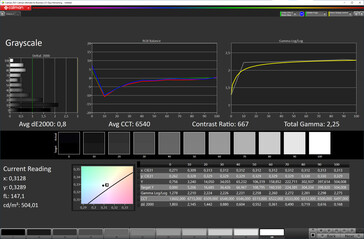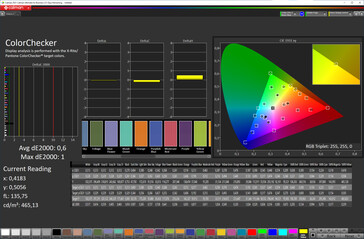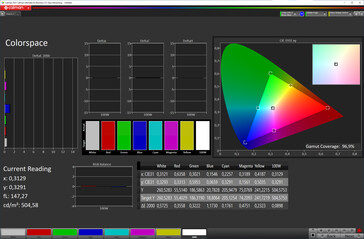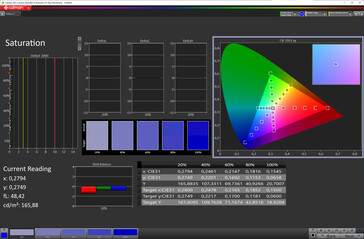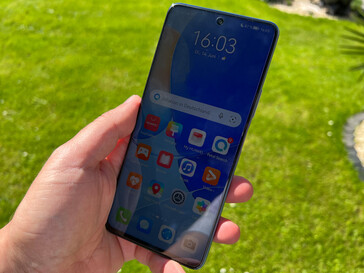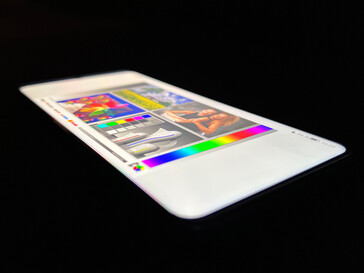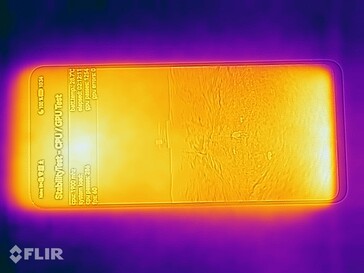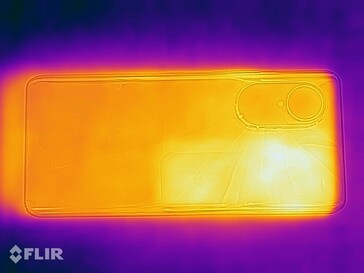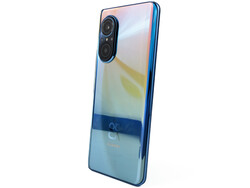Huawei Nova 9 SE Review: Chic smartphone with 108 MP camera
Possible competitors in comparison
Rating | Date | Model | Weight | Drive | Size | Resolution | Price |
|---|---|---|---|---|---|---|---|
| 80.3 % v7 (old) | 06 / 2022 | Huawei Nova 9 SE SD 680, Adreno 610 | 191 g | 128 GB UFS 2.2 Flash | 6.78" | 2388x1080 | |
| 80 % v7 (old) | 05 / 2022 | Xiaomi Redmi Note 11 SD 680, Adreno 610 | 179 g | 64 GB UFS 2.2 Flash | 6.43" | 2400x1080 | |
| 77.7 % v7 (old) | 06 / 2022 | Oppo A76 SD 680, Adreno 610 | 189 g | 128 GB UFS 2.2 Flash | 6.56" | 1612x720 | |
| 81.1 % v7 (old) | 06 / 2022 | Samsung Galaxy M23 SD 750G 5G, Adreno 619 | 198 g | 128 GB UFS 2.1 Flash | 6.60" | 2408x1080 |
Case and features: Nova 9 SE without DRM certification
The Huawei Nova 9 SE is available in three color variants: Crystal Blue, Midnight Black, and Pearl White. Our Crystal Blue review sample features an appealingly iridescent back. The build quality is also impressive and convinces with tight and even gaps. The smartphone can withstand twisting tests without any creaks.
An IP certification against dust and water is not available. In general, Huawei is a bit stingy in terms of features. Dual-SIM is available, but there is no option for memory expansion via microSD and neither is an audio jack present. The USB 2.0 port supports OTG, so external peripherals and storage devices can be connected. DRM certification is not available either, so correspondingly protected content can only be consumed in SD quality.
Communication, software, and operation
Huawei relies on the Qualcomm Snapdragon 680 4G SoC in the Nova 9 SE. Although the chipset's Snapdragon X11 modem does not support 5G, it is still quite fast with up to 390 MBit/s (download) even in the LTE network. The Wi-Fi module supports the 2.4 and 5.0 GHz networks and works with expected speeds and highly stable data rates when tested with our reference router Asus ROG Rapture GT-AXE11000.
The operating system used is Android 11 without Google services layered on top by Huawei's in-house EMUI 12 user interface. Apps can be installed via the AppGallery, but many well-known communication platforms such as WhatsApp or Signal are still missing. However, missing apps can be installed via Petal search from relevant websites but that is not easy to handle, especially for less tech-savvy users. The security patches were updated on March 1, 2022 at the time of the testing and are still reasonably up-to-date. Huawei is probably aiming for a quarterly update cadance here.
The capacitive touchscreen of Huawei's Nova 9 SE responds reliably to inputs and implements them precisely. A screen protector is pre-applied at the factory to the unspecified glass, which slightly reduces the gliding properties.
A fingerprint scanner has been integrated into the power button for biometric security, which unlocks the smartphone quickly and reliably. Additionally, or alternatively, facial recognition via the front camera is available, which works faster but is also less secure.
| Networking | |
| iperf3 transmit AXE11000 | |
| Huawei Nova 9 SE | |
| Samsung Galaxy M23 | |
| Xiaomi Redmi Note 11 | |
| Oppo A76 | |
| iperf3 receive AXE11000 | |
| Samsung Galaxy M23 | |
| Huawei Nova 9 SE | |
| Xiaomi Redmi Note 11 | |
| Oppo A76 | |
Cameras: Strong main optics in Huawei smartphone
The front-facing camera of the Huawei Nova 9 SE enables quite decent pictures but quickly loses contrast in somewhat heavier lighting conditions.
The heart of the main camera is a 108 MP sensor (Samsung HM2, S5KHM2), which takes appealing pictures. However, the Snapdragon 680's image processor is a bit overburdened with this as it nominally only supports up to 64 MP. This does not reduce the quality of the photos, but it does affect the speed. This is not serious but still noticeable. The other lenses are nicer accessories but at best deliver usable results for online use.
When it comes to movies, Full HD and 30 frames per second are the tops. At least a 4K option would certainly have been nice.
Image comparison
Choose a scene and navigate within the first image. One click changes the position on touchscreens. One click on the zoomed-in image opens the original in a new window. The first image shows the scaled photograph of the test device.
HauptkameraHauptkameraUltraweitwinkel5-facher ZoomLow-Light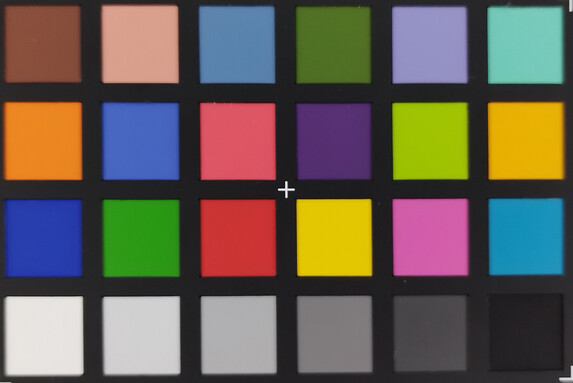
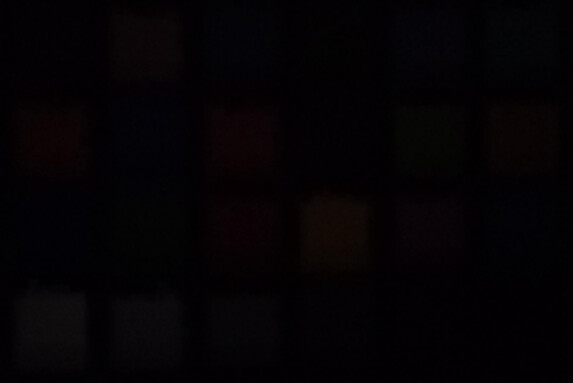
Display: Very accurate and flicker-free LCD
The 6.78-inch LC screen of Huawei's Nova 9 SE offers a sharp display. The refresh rate can be set to either 60 or 90 Hz, or the system can automatically switch between the two values.
The brightness of 523 cd/m² on average is decent and is also achieved in manual mode as well as in the APL measurement. However, restrictions have to be reckoned with on bright days when using the device outdoors. The contrast is also rather mediocre due to the quite high black value. However, the color reproduction and the white balance of the display are extremely good. Furthermore, no pulse width modulation (PWM) is used to control the brightness.
| |||||||||||||||||||||||||
Brightness Distribution: 93 %
Center on Battery: 546 cd/m²
Contrast: 728:1 (Black: 0.75 cd/m²)
ΔE ColorChecker Calman: 0.6 | ∀{0.5-29.43 Ø4.77}
ΔE Greyscale Calman: 0.8 | ∀{0.09-98 Ø5}
96.9% sRGB (Calman 2D)
Gamma: 2.25
CCT: 6540 K
| Huawei Nova 9 SE LCD, 2388x1080, 6.8" | Xiaomi Redmi Note 11 OLED, 2400x1080, 6.4" | Oppo A76 IPS, 1612x720, 6.6" | Samsung Galaxy M23 IPS, 2408x1080, 6.6" | |
|---|---|---|---|---|
| Response Times | 89% | -100% | -71% | |
| Response Time Grey 50% / Grey 80% * (ms) | 41.28 ? | 1.135 ? 97% | 41 ? 1% | 36 ? 13% |
| Response Time Black / White * (ms) | 8.63 ? | 1.635 ? 81% | 26 ? -201% | 22 ? -155% |
| PWM Frequency (Hz) | 171.4 | |||
| Screen | -34% | -66% | -203% | |
| Brightness middle (cd/m²) | 546 | 702 29% | 569 4% | 551 1% |
| Brightness (cd/m²) | 523 | 701 34% | 562 7% | 525 0% |
| Brightness Distribution (%) | 93 | 98 5% | 90 -3% | 87 -6% |
| Black Level * (cd/m²) | 0.75 | 0.5 33% | 0.4 47% | |
| Contrast (:1) | 728 | 1138 56% | 1378 89% | |
| Colorchecker dE 2000 * | 0.6 | 1 -67% | 2.16 -260% | 4.57 -662% |
| Colorchecker dE 2000 max. * | 1 | 2.3 -130% | 3.37 -237% | 6.56 -556% |
| Greyscale dE 2000 * | 0.8 | 1.4 -75% | 1.8 -125% | 5.1 -538% |
| Gamma | 2.25 98% | 2.2 100% | 2.177 101% | 2.31 95% |
| CCT | 6540 99% | 6520 100% | 6784 96% | 7750 84% |
| Total Average (Program / Settings) | 28% /
-3% | -83% /
-73% | -137% /
-177% |
* ... smaller is better
Display Response Times
| ↔ Response Time Black to White | ||
|---|---|---|
| 8.63 ms ... rise ↗ and fall ↘ combined | ↗ 4.65 ms rise | |
| ↘ 12.6 ms fall | ||
| The screen shows fast response rates in our tests and should be suited for gaming. In comparison, all tested devices range from 0.1 (minimum) to 240 (maximum) ms. » 23 % of all devices are better. This means that the measured response time is better than the average of all tested devices (20.2 ms). | ||
| ↔ Response Time 50% Grey to 80% Grey | ||
| 41.28 ms ... rise ↗ and fall ↘ combined | ↗ 17.97 ms rise | |
| ↘ 23.31 ms fall | ||
| The screen shows slow response rates in our tests and will be unsatisfactory for gamers. In comparison, all tested devices range from 0.165 (minimum) to 636 (maximum) ms. » 66 % of all devices are better. This means that the measured response time is worse than the average of all tested devices (31.6 ms). | ||
Screen Flickering / PWM (Pulse-Width Modulation)
| Screen flickering / PWM not detected | |||
In comparison: 53 % of all tested devices do not use PWM to dim the display. If PWM was detected, an average of 8080 (minimum: 5 - maximum: 343500) Hz was measured. | |||
Performance, emissions, and battery life
The Huawei Nova 9 SE is powered by a Qualcomm Snapdragon 680 4G SoC with 8 GB LPDDR4x RAM and the Adreno 610 as the integrated graphics unit. The SoC is positioned in the lower mid-range. The system speed is surprisingly good and smooth, but expectations should be lowered for gaming. While casual games are no problem for the Huawei smartphone, demanding titles like PUGB or Asphalt 9 are not always smoothly playable even with reduced details. That being said, the Nova 9 SE does not get too hot at any time and can consistently tap its full performance.
The speaker on the chin provides a decent sound experience as long as the volume is not overdone. Wired headsets or headphones can be connected to the USB port with an optional adapter if necessary, and Bluetooth is available wirelessly.
With its 4000 mAh battery, the Nova 9 SE achieves good runtimes of over 13 hours in our Wi-Fi test with adjusted screen brightness (150 cd/m²). However, it is the taillight in our comparison since the competition consistently relies on larger energy storage.
| GFXBench | |
| on screen Aztec Ruins Normal Tier Onscreen (sort by value) | |
| Huawei Nova 9 SE | |
| Xiaomi Redmi Note 11 | |
| Oppo A76 | |
| Samsung Galaxy M23 | |
| Average Qualcomm Snapdragon 680 4G (4.6 - 17, n=15) | |
| Average of class Smartphone (6.2 - 166, n=212, last 2 years) | |
| 1920x1080 Aztec Ruins Normal Tier Offscreen (sort by value) | |
| Huawei Nova 9 SE | |
| Xiaomi Redmi Note 11 | |
| Oppo A76 | |
| Samsung Galaxy M23 | |
| Average Qualcomm Snapdragon 680 4G (5.1 - 9.8, n=15) | |
| Average of class Smartphone (3.4 - 367, n=212, last 2 years) | |
| on screen Aztec Ruins High Tier Onscreen (sort by value) | |
| Huawei Nova 9 SE | |
| Xiaomi Redmi Note 11 | |
| Oppo A76 | |
| Samsung Galaxy M23 | |
| Average Qualcomm Snapdragon 680 4G (2.7 - 11, n=15) | |
| Average of class Smartphone (0.85 - 144, n=213, last 2 years) | |
| 2560x1440 Aztec Ruins High Tier Offscreen (sort by value) | |
| Huawei Nova 9 SE | |
| Xiaomi Redmi Note 11 | |
| Oppo A76 | |
| Samsung Galaxy M23 | |
| Average Qualcomm Snapdragon 680 4G (1.4 - 3.3, n=15) | |
| Average of class Smartphone (1.2 - 146, n=212, last 2 years) | |
| Huawei Nova 9 SE | Xiaomi Redmi Note 11 | Oppo A76 | Samsung Galaxy M23 | Average 128 GB UFS 2.2 Flash | Average of class Smartphone | |
|---|---|---|---|---|---|---|
| AndroBench 3-5 | -12% | -2% | -7% | -9% | 113% | |
| Sequential Read 256KB (MB/s) | 973.13 | 895.34 -8% | 980.7 1% | 867.2 -11% | 739 ? -24% | 2242 ? 130% |
| Sequential Write 256KB (MB/s) | 714.41 | 519.23 -27% | 711.7 0% | 500.3 -30% | 536 ? -25% | 1881 ? 163% |
| Random Read 4KB (MB/s) | 154.28 | 172.95 12% | 174.7 13% | 187.9 22% | 193.6 ? 25% | 299 ? 94% |
| Random Write 4KB (MB/s) | 211.27 | 163.29 -23% | 162.7 -23% | 189.5 -10% | 186.7 ? -12% | 345 ? 63% |
Temperature
(+) The maximum temperature on the upper side is 31.2 °C / 88 F, compared to the average of 35.2 °C / 95 F, ranging from 21.9 to 247 °C for the class Smartphone.
(+) The bottom heats up to a maximum of 29.5 °C / 85 F, compared to the average of 34 °C / 93 F
(+) In idle usage, the average temperature for the upper side is 29.2 °C / 85 F, compared to the device average of 32.9 °C / 91 F.
Loudspeaker
Huawei Nova 9 SE audio analysis
(+) | speakers can play relatively loud (94 dB)
Bass 100 - 315 Hz
(-) | nearly no bass - on average 19.3% lower than median
(+) | bass is linear (2.6% delta to prev. frequency)
Mids 400 - 2000 Hz
(+) | balanced mids - only 4.2% away from median
(+) | mids are linear (3.8% delta to prev. frequency)
Highs 2 - 16 kHz
(±) | higher highs - on average 9.9% higher than median
(+) | highs are linear (4.3% delta to prev. frequency)
Overall 100 - 16.000 Hz
(±) | linearity of overall sound is average (17.7% difference to median)
Compared to same class
» 14% of all tested devices in this class were better, 8% similar, 78% worse
» The best had a delta of 11%, average was 35%, worst was 134%
Compared to all devices tested
» 34% of all tested devices were better, 8% similar, 57% worse
» The best had a delta of 4%, average was 24%, worst was 134%
Xiaomi Redmi Note 11 audio analysis
(+) | speakers can play relatively loud (89 dB)
Bass 100 - 315 Hz
(-) | nearly no bass - on average 29.8% lower than median
(±) | linearity of bass is average (8.8% delta to prev. frequency)
Mids 400 - 2000 Hz
(+) | balanced mids - only 4.5% away from median
(+) | mids are linear (4.8% delta to prev. frequency)
Highs 2 - 16 kHz
(+) | balanced highs - only 4.4% away from median
(+) | highs are linear (2.9% delta to prev. frequency)
Overall 100 - 16.000 Hz
(±) | linearity of overall sound is average (18.8% difference to median)
Compared to same class
» 22% of all tested devices in this class were better, 10% similar, 68% worse
» The best had a delta of 11%, average was 35%, worst was 134%
Compared to all devices tested
» 43% of all tested devices were better, 8% similar, 50% worse
» The best had a delta of 4%, average was 24%, worst was 134%
Battery life
| Battery Runtime - WiFi Websurfing | |
| Average of class Smartphone (12.1 - 54.1, n=210, last 2 years) | |
| Samsung Galaxy M23 | |
| Oppo A76 | |
| Xiaomi Redmi Note 11 | |
| Huawei Nova 9 SE | |
Pros
Cons
Verdict: Good overall package with Google abstinence
Huawei offers an appealing mid-range smartphone with the Nova 9 SE, which is particularly convincing with a good main camera, an enduring battery, an accurate display, and extraordinary colors.
The Huawei Nova 9 SE is a good smartphone, but it still has to do without Google services
However, the Huawei smartphone also has to put up with some criticism. The panel could have been a bit brighter and have had higher contrast. Furthermore, 5G, DRM certification, and Google Mobile Services (GMS) are not available.
Huawei gets a lot of things right with the main camera, but the additional lenses are not really convincing. Furthermore, video recordings are limited to just Full HD 30 fps.
Strong alternatives to the Nova 9 SE are the Galaxy M23 and the Redmi Note 11.
Price and availability
The Huawei Nova 9 SE can be purchased for €311 directly from the Huawei online store and is often offered there with discounts in kind, such as free headphones and other accessories. The smartphone is also available at Amazon for a cheaper price.
Huawei Nova 9 SE
- 06/17/2022 v7 (old)
Daniel Schmidt


